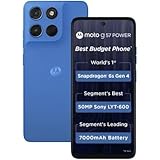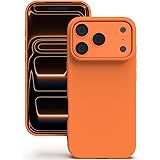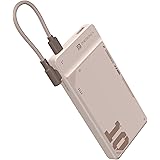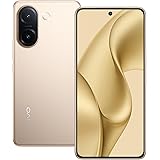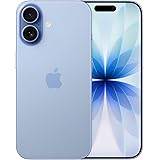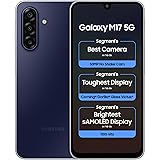Of all the adjustments one makes when moving countries, I hadn’t expected the lack of retinol to deliver the sharpest shock.
A month into Berlin, I plunged my fingers into my jar of Olay retinol night cream only to find—nothing. Missing day one of my carefully rotated five-day skin-cycling ritual felt like the start of a dermal apocalypse. What I didn’t realise then was that I was mourning more than skincare.
Amazon mocked me with imports priced at nearly four times what I’d pay in India. Google offered no salvation. My backups, global and domestic alike, were suddenly unavailable or prohibitively expensive.
Growing up in India, “global beauty” was shorthand for the American, occasionally French label (rarely made in France). My definition was shaped by my aunt’s US-returned suitcases: St Ives scrubs, Clinique, Kiehl’s, Sephora lip balms. They were impossibly chic, impossibly “international”. Add TV ads and the women’s magazine spreads I devoured at the beauty parlour, and my mental map of “global” was sealed. German skincare never figured; it was simply foreign.
And then Berlin happened. I ran out of things I relied on, perhaps, for things more than skincare.
Late one night, scrolling past Google’s glossy carousel of overpriced imports, I found it: a €5.99 (₹540) “Nachtcreme with retinol and bakuchiol” at DM Drogerie Markt. It was my first true introduction to German skincare, a category I had never considered seriously until necessity forced my hand.
German skincare struck me as clinical rather than theatrical. No ornate packaging or lofty claims. Just fragrance-free, efficient formulations with ingredients traceable to research. The EU’s stringent regulations meant every jar was already science-screened. Beauty here felt pharmacy or need-led. It was skincare without the theatre.
My bathroom in Delhi had resembled a stock exchange: creams, serums, toners, masks abandoned mid-rotation, edging towards expiry. German skincare broke that cycle. It reminded me that skincare could be less about foraging for spectacle and more about helping the body’s largest organ do its job.
The timing felt apt. Globally, beauty is reconsidering itself. Social media dermatologists are validating simpler routines, and consumers are asking whether cabinets crammed with bottles signify care or just marketing.
Berlin already held the answer: efficacy over excess, science over spectacle. German beauty’s legacy is long-established; it’s the birthplace of Nivea, a brand that feels as Indian, if not more, than the homegrown Boroline. Balea delivers on everything from serums to dry shampoo. Eucerin’s anti-pigment illuminating eye cream is my daily saviour. Elkos hand cream from Edeka, under €2 (₹180), is everywhere. Biotulin’s Supreme Skin Gel offers the famous “no-needle botox” effect. And Less’s face oil lives up to its name: understated, elegant.
Source link
Redmi 13 5G Prime Edition, Hawaiian Blue, 8GB+128GB | India Debut SD 4 Gen 2 AE | 108MP Pro Grade Camera | 6.79in Largest Display in Segment
₹12,999.00 (as of December 21, 2025 00:00 GMT +05:30 - More infoProduct prices and availability are accurate as of the date/time indicated and are subject to change. Any price and availability information displayed on [relevant Amazon Site(s), as applicable] at the time of purchase will apply to the purchase of this product.)Motorola G57 Power 5G (Regatta, 8GB RAM, 128GB Storage) | Snapdragon 6s Gen 4 Processor | 6.72" FHD+ Display | 50MP LYT-600 + 8MP Ultrawide | 8MP Selfie Camera | 7000mAh Battery, 33W TurboPower | IP64
₹14,599.00 (as of December 21, 2025 00:00 GMT +05:30 - More infoProduct prices and availability are accurate as of the date/time indicated and are subject to change. Any price and availability information displayed on [relevant Amazon Site(s), as applicable] at the time of purchase will apply to the purchase of this product.)YATWIN Silicone Case for iPhone 17 Pro Max, Soft-Touch, Shockproof, DustProof, Antiskid Phone Cover for Apple iPhone 17 Pro Max - Orange
₹299.00 (as of December 21, 2025 00:00 GMT +05:30 - More infoProduct prices and availability are accurate as of the date/time indicated and are subject to change. Any price and availability information displayed on [relevant Amazon Site(s), as applicable] at the time of purchase will apply to the purchase of this product.)Portronics Luxcell Uno 10K 10000 mAh 22.5W Fast Charging Power Bank with Detachable Type C Cable, Ultra Slim Power Bank with Mach USB-A Output, Type C PD Output, Type C Input, Wake Up Button(Mocha)
₹799.00 (as of December 21, 2025 00:00 GMT +05:30 - More infoProduct prices and availability are accurate as of the date/time indicated and are subject to change. Any price and availability information displayed on [relevant Amazon Site(s), as applicable] at the time of purchase will apply to the purchase of this product.)Ambrane Magsafe Wireless 10000Mah Fast Charging USB Type-C Input Power Bank, Strong Magnet, 22.5W Output For iPhone 12 & Above, Android & Other Qi Enabled Devices + Magnetic Ring (Aerosync Snap, Blue)
₹1,499.00 (as of December 21, 2025 00:00 GMT +05:30 - More infoProduct prices and availability are accurate as of the date/time indicated and are subject to change. Any price and availability information displayed on [relevant Amazon Site(s), as applicable] at the time of purchase will apply to the purchase of this product.)vivo V60e 5G (Noble Gold, 8GB RAM, 256GB Storage) with No Cost EMI/Additional Exchange Offers
₹31,999.00 (as of December 21, 2025 00:00 GMT +05:30 - More infoProduct prices and availability are accurate as of the date/time indicated and are subject to change. Any price and availability information displayed on [relevant Amazon Site(s), as applicable] at the time of purchase will apply to the purchase of this product.)Redmi A4 5G (Sparkle Purple, 4GB RAM, 128GB Storage) | Segment Largest 6.88in 120Hz | 50MP Dual Camera | 18W Fast Charging | Charger in The Box
₹8,299.00 (as of December 21, 2025 00:00 GMT +05:30 - More infoProduct prices and availability are accurate as of the date/time indicated and are subject to change. Any price and availability information displayed on [relevant Amazon Site(s), as applicable] at the time of purchase will apply to the purchase of this product.)iPhone 17 256 GB: 15.93 cm (6.3″) Display with Promotion, A19 Chip, Center Stage Front Camera for Smarter Group Selfies, Improved Scratch Resistance, All-Day Battery Life; Mist Blue
Now retrieving the price.
(as of December 21, 2025 00:00 GMT +05:30 - More infoProduct prices and availability are accurate as of the date/time indicated and are subject to change. Any price and availability information displayed on [relevant Amazon Site(s), as applicable] at the time of purchase will apply to the purchase of this product.)


